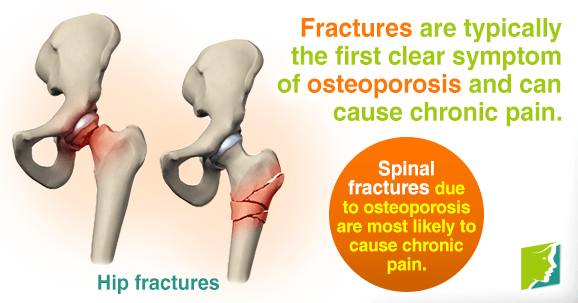Osteoporosis is a common symptom of menopause that emerges unexpectedly. The etymology of the word comes from the Greek “ostoun”, meaning bones, and “poros”, meaning pores. Therefore, it translates to “porous bones”, relating to the decreased bone strength and density that is characteristic of the disease.
With the many changes taking place in the body, menopausal women are at high risk for this dangerous condition that can cause weakness and fracture. A common question that individuals ask their doctor is, “is osteoporosis painful?” The answer to this depends on the stage the disease. Keep reading to learn more.
Causes
During menopause, the main cause for osteoporosis is the sharp decline in the sex hormone estrogen. When estrogen levels are low, it causes a rapid degeneration of the bones, which often results in osteopenia - the precursor to osteoporosis - and ultimately osteoporosis. Another central cause of osteoporosis is nutrient deficiency. There is a strong link between osteoporosis and individuals who are low in calcium, vitamin D, and vitamin K. Other factors that weigh in to your likelihood of developing the disease are genetics, cigarette smoking, and excessive alcohol use.
Symptoms
The main issue with osteoporosis is that there are no clear symptoms of the disease. It isn't like arthritis, a disease of the joints, where there is a constant, painful stiffness. It may come as a surprise, but even if your bones are quickly losing density and becoming thin, you will likely be unaware that it's even occurring.
Osteoporosis is painful, however, when you get a fracture. Fractures are typically the first clear symptom of osteoporosis and can cause temporary to chronic pain. Spinal fractures due to osteoporosis are most likely to cause chronic pain.
Getting Tested
Since there are so few signs of osteoporosis before it's too late, it is important to get tested if you feel you may be at risk. It is highly advised that all women over the age of 55 get a bone density test by way of a dual energy x-ray. If your t-score is greater than or equal to -1.0, you have a healthy bone mass. Scores between -1.0 and -2.5 signify osteopenia, and a score of -2.5 or less confirms osteoporosis.
Treatments
The first thing you can do to slow bone thinning during menopause is taking phytoestrogenic herbs, which are received by estrogen receptors in the body to activate estrogenic functions. Black cohosh and soy, for example, are packed with these compounds and help fight off the disease.
In addition, get a blood test to measure your nutrient levels. If your calcium and vitamin D are low, make sure to restore levels with foods or supplements. Finally, keep your body and skeletal structure strong by incorporating low-impact strength training exercise into your week.
When you wonder, “Is osteoporosis painful?” know that generally, no. Individuals do not get a painful alert from the body upon developing this disease, which makes it all the more elusive and dangerous. The resulting fractures of the hip, spine, and wrists can lead to both temporary and chronic pain. Protect yourself by taking action and preventing osteoporosis.
Sources
- National Institutes of Health. (2013). Osteoporosis. Retrieved May 8, 2014, from http://www.nlm.nih.gov/medlineplus/osteoporosis.html
- NYU Langone Medical Center. (2013). Soy. Retrieved June 11, 2014, from http://www.med.nyu.edu/content?ChunkIID=21767
- University of Maryland Medical Center. (2011). Black Cohosh. Retrieved April 29, 2014, from https://umm.edu/health/medical/altmed/herb/black-cohosh
- University of Maryland Medical Center. (2012). Osteoporosis. Retrieved April 29, 2014, from http://umm.edu/health/medical/reports/articles/osteoporosis



